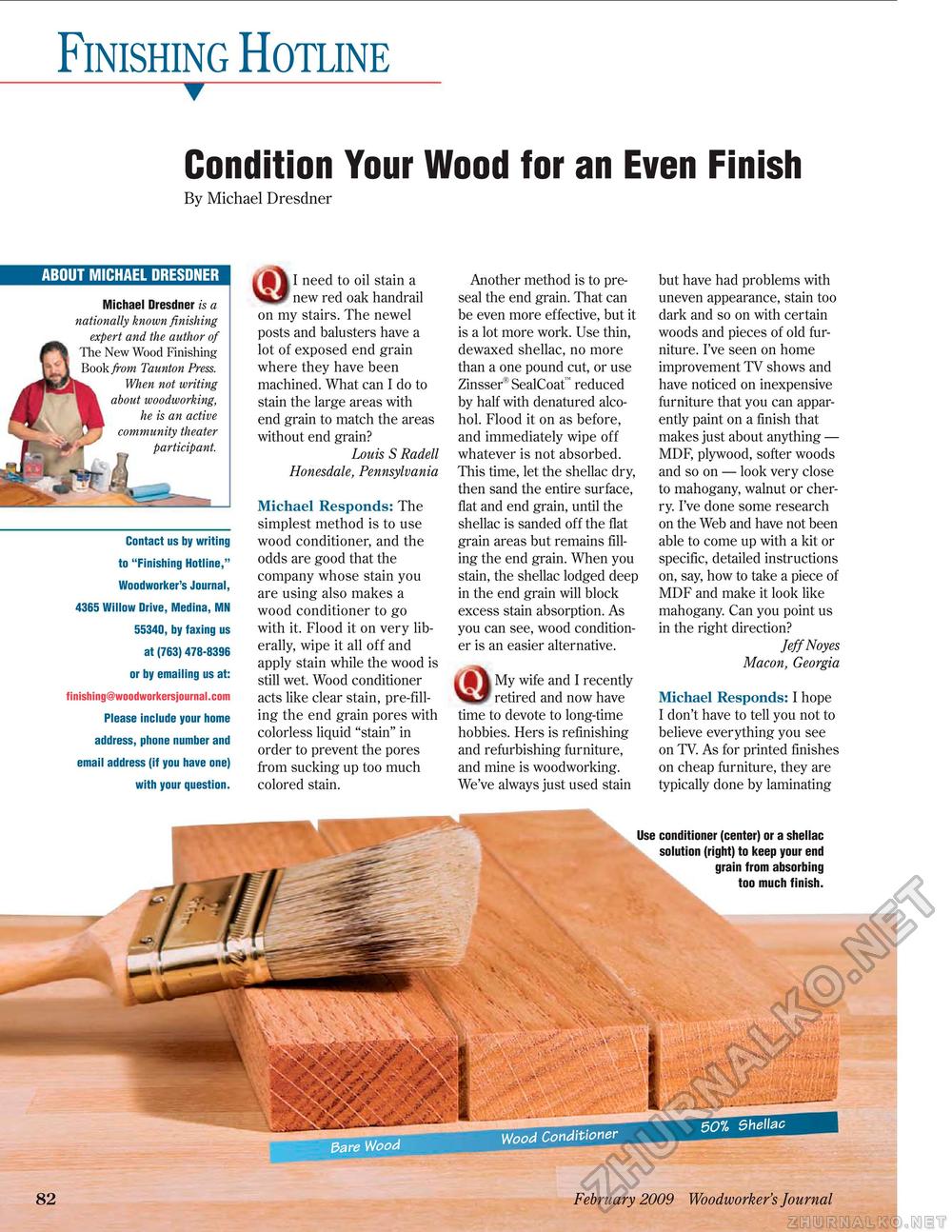Woodworker's Journal 2009-33-1, страница 82
Finishing Hotline ▼ Condition Your Wood for an Even Finish By Michael Dresdner ABOUT MICHAEL DRESDNER Contact us by writing to "Finishing Hotline," Woodworker's Journal, 4365 Willow Drive, Medina, MN 55340, by faxing us at (763) 478-8396 or by emailing us at: f inishingawoodworkersjournal. com Please include your home address, phone number and email address (if you have one) with your question. M 1 I need to oil stain a new red oak handrail on my stairs. The newel posts and balusters have a lot of exposed end grain where they have been machined. What can I do to stain the large areas with end grain to match the areas without end grain? Louis S Radell Honesdale, Pennsylvania Michael Responds: The simplest method is to use wood conditioner, and the odds are good that the company whose stain you are using also makes a wood conditioner to go with it. Flood it on very liberally, wipe it all off and apply stain while the wood is still wet. Wood conditioner acts like clear stain, pre-fill-ing the end grain pores with colorless liquid "stain" in order to prevent the pores from sucking up too much colored stain. Another method is to pre-seal the end grain. That can be even more effective, but it is a lot more work. Use thin, dewaxed shellac, no more than a one pound cut, or use Zinsser® SealCoaf" reduced by half with denatured alcohol. Flood it on as before, and immediately wipe off whatever is not absorbed. This time, let the shellac dry, then sand the entire surface, flat and end grain, until the shellac is sanded off the flat grain areas but remains filling the end grain. When you stain, the shellac lodged deep in the end grain will block excess stain absorption. As you can see, wood conditioner is an easier alternative. My wife and I recently retired and now have time to devote to long-time hobbies. Hers is refmishing and refurbishing furniture, and mine is woodworking. We've always just used stain but have had problems with uneven appearance, stain too dark and so on with certain woods and pieces of old furniture. I've seen on home improvement TV shows and have noticed on inexpensive furniture that you can apparently paint on a finish that makes just about anything — MDF, plywood, softer woods and so on — look very close to mahogany, walnut or cherry. I've done some research on the Web and have not been able to come up with a kit or specific, detailed instructions on, say, how to take a piece of MDF and make it look like mahogany. Can you point us in the right direction? JeffNoyes Macon, Georgia Michael Responds: I hope I don't have to tell you not to believe everything you see on TV. As for printed finishes on cheap furniture, they are typically done by laminating Michael Dresdner is a nationally known finishing expert and the author of The New Wood Finishing Book from Taunton Press. When not writing about woodworking, he is an active community theater Wood Conditioner Use conditioner (center) or a shellac solution (right) to keep your end grain from absorbing too much finish. 82 February 2009 Woodworker's Journal |








